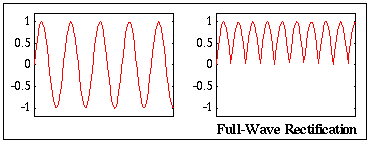False Target Problem
-
(See Correspondence Problem)
Far-Sightedness
-
(See Hyperopia).
Feature Binding
-
The binding of features processed by different systems (audio, visual)
or of different subsystems (motion, depth, color) to create a
unified conscious percept.
Feature Matching
-
In Binocular Vision and Stereopsis, disparity can be extracted
from an image if features in the two corresponding binocular images
are matchable e.g. lines to lines, dots to dots.
Fechner's Paradox
-
(Hering 1964)
-
The fact that a monocular view may look brighter than a binocular view. Suppose that a scene is viewed through both eyes but that one eye sees it through a neutral filter that attenuates all wavelengths by a constant ratio. The filter does not distort the reflectances or ratios of light reaching the eye, but only its absolute intensity. If the filtered eye is entirely occluded the scene looks brighter and more vivid than with the filter despite the fact that less total light is reaching the two eyes and the reflectances are still the same.
Figure-Ground Separation
-
Filling-In Theory
-
Idea that the brightness and color of interiors of homogeneous regions are determined by a process of lateral spread of neural activation that is initiated by units responding to abrupt changes in luminance and wavelength. (Gerrits and Vendrik; Grossberg and Mingolla; Dennett; Ramachandran)
Filtering
-
First-Order Statistics
-
Captures differences in overall brightness.
(See also Second-Order Statistics).
First-Order Motion Mechanisms
-
Captures motion information from moving objects or features that differ from the background in luminance.
(See also
Second-Order Motion Mechanisms).
Fixation
-
Alignment of the eyes so that the image of the fixated target falls on the area centralis. For animals with immobile eyes the alignment of the head towards the fixated target
Flicker
-
Alternating levels of brightness.
(See also
Critical Flicker Frequency and
Flicker Photometry Experiment)
Flicker Photometry Experiment
-
Stimuli consisting of a pair of different color test lights alternate. When the lights alternate slowly the pattern appears to change between the colors of the two lights. When the lights alternate rapidly observers fail to see the color modulation and instead perceive a dark-light modulation. Demonstrates that the temporal resolution for distinguishing blue-yellow is less than red-green which in turn is less than light-dark.
Floater
-
A blurry spot that appears to float around in the eye but does not
block vision. The blur is the result of debris from the vitreous humour
casting a shadow on the retina.
Focal Length
-
Relates the distance between an image source and a lens ds and the distance of the lens to the image di by the lenses focal length f.

Focal Vision
-
(Ingle, Schneider, Tevarthen, Held 67-68)
-
The role of vision involved in the examination and identification of objects associated with the fovea and exploratory eye movements.
(As opposed to Ambient Vision)
Fovea
-
The area of the retina associated with the highest concentration of
cones and therefore the highest acuity. Humans move their eyes so
that images of interest are projected onto their foveas.
Foveola
-
The center of the fovea.
Full-Wave Rectification
-
A signal which shows a positive response to both the positive and negative parts of a sinusiod (i.e. frequency doubling). Many complex cells show this to contrast reversing patterns.
(See also Half-Wave Rectification).
